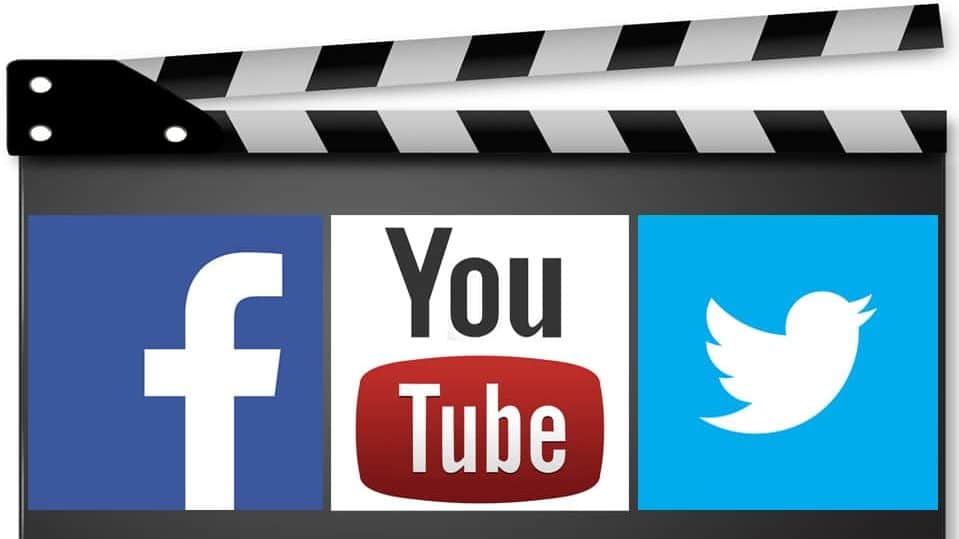Mastering the Art of Testimonial Videos to Boost Online Sales

Did you know that 64% of customers are more likely to buy a product online after watching a video about it?
The power of testimonial videos to sway decision-making is undeniable.
You might be wondering how to harness this tool effectively. It’s not just about pointing a camera at your happiest customer and pressing record.
There’s an art to it.
Crafting the perfect testimonial video is a strategic process that requires careful planning, thoughtful scripting, and skillful editing.
But what are the steps to achieve this? Let’s explore.
Table of Contents
Understanding Testimonial Videos
In order to fully grasp the concept of testimonial videos, you must first understand that they’re powerful tools that can greatly enhance a business’s credibility by showcasing real customer experiences and feedback.
Imagine yourself as a prospective customer, browsing through different businesses. You’re not just looking for products or services; you’re searching for a reliable and trustworthy brand.
Suddenly, you stumble upon a testimonial video of a certain company. You see real people, just like you, sharing their positive experiences. It’s authentic, it’s compelling, and it makes you trust the brand instantly.
That’s the magic of testimonial videos.
They’re not just ordinary promotional videos; they’re customer stories captured on film. They provide a platform for your satisfied customers to share their experiences, thereby giving a face and voice to your customer feedback.
These videos are a creative way to exhibit the quality of your product or service, and they offer an emotional connection to potential customers that static text testimonials simply can’t achieve.
Importance of Customer Testimonials
By harnessing the power of customer testimonials, you’re not just boosting your marketing efforts, but also building a level of trust that could greatly influence your potential customers‘ purchasing decisions.
This is because testimonials act as social proof, which can break down the barriers of skepticism that often surround your products or services. It’s as if you’re letting satisfied customers do the talking for you, thereby enhancing the credibility of your brand.
Consider this: When you’re about to buy a product, don’t you often look for reviews or ratings?
Most likely, you do.
And when you see a product with a slew of positive testimonials, you’re more inclined to buy it, aren’t you?
That’s the power of customer testimonials. They’re the voice of your brand from the perspective of the people who matter most—your customers.
Planning Your Testimonial Video

Now that you understand the power of customer testimonials, let’s map out a strategy for creating your own effective testimonial video.
Begin by identifying the key messages you want to convey.
What makes your product or service stand out? Why should viewers choose you over competitors? Keep these points in focus, as they’ll direct your testimonial video’s narrative.
Next, consider the structure of your video. A well-told story can captivate viewers, so craft a compelling narrative.
Start with a problem, introduce your solution, and conclude with the positive outcome. This classic structure can make your testimonial video more engaging.
Remember, authenticity is paramount. Don’t script your testimonials; instead, encourage customers to share their honest experiences. Their genuine words will resonate more with viewers than any polished marketing speech.
Lastly, plan the logistics. Where will you shoot the video? Who’ll be involved? What equipment do you need?
Factor in post-production too: how will you edit the footage, add music or graphics, and distribute the video?
Planning your testimonial video is like laying the foundation for a house. Getting this right is crucial because it sets the stage for everything else.
Choosing the Right Testimonial
Choosing the right testimonial is like selecting the perfect ingredient for your recipe; it can greatly enhance the final outcome, making your video more compelling and impactful.
It’s about finding the perfect balance of authenticity, relevance, and persuasion.
First, you need real people who’ve actually used your product or service. This isn’t just about credibility; real users bring a level of passion and genuine enthusiasm that can’t be faked. They’re your best advocates, and their stories resonate with viewers.
Next, you must make sure that their experiences are relevant to your target audience. If you’re selling a high-end product, for example, a testimonial from a budget-conscious customer mightn’t hit the mark. Aim for testimonials that reflect the aspirations and pain points of your potential customers.
Lastly, remember that a great testimonial isn’t just a rave review; it’s a persuasive argument. It should spotlight your product’s benefits, overcome objections, and compel viewers to take action.
So, when you’re sifting through your potential testimonials, look for those that don’t just sing your praises, but also sell your product in a compelling, believable way.
Crafting the Testimonial Script

Once you’ve handpicked the ideal testimonial, it’s time to roll up your sleeves and craft a compelling script that showcases your product’s strengths through a genuine, relatable narrative.
Your script should reflect the true experience of the customer, highlighting the issue they faced, how your product helped, and the benefits they reaped.
However, a great script isn’t built overnight. You need to invest time into tweaking and refining it until it sounds natural. Remember, authenticity is key here.
Consider the following aspects when crafting your script:
- Start with a catchy introduction that outlines the customer’s problem
- Detail how your product or service provided a solution
- Describe the outcome and benefits to the customer
- Conclude with a strong call to action
Don’t forget to keep your script concise and user-friendly. Strike a balance between providing enough information and avoiding information overload. Ultimately, your testimonial video’s script should be a powerful tool in your marketing arsenal, capable of converting potential customers into loyal ones.
It’s a delicate art, but with focus and effort, you can master it.
Filming Techniques for Testimonials
When it comes to capturing your customer’s story on film, employing effective filming techniques can transform a simple testimonial into a persuasive, engaging, and visually compelling piece of content.
It’s not just about pointing and shooting a camera; it’s about considering the framing, lighting, and angles to create a polished, professional look.
You’ll want to make sure the interviewee is comfortable and relaxed. This is where filming in a familiar environment can make a big difference.
Natural light is your best friend. It’s flattering, soft, and typically available in abundance. If you’re shooting indoors, position your subject near a window for a warm, inviting look.
Don’t forget to pay attention to the background. Keep it simple, yet interesting. A cluttered or busy background can distract from the subject.
Experiment with different camera angles. An eye-level shot often works well, creating a sense of equality and connection between the viewer and the interviewee.
Lastly, confirm the subject is looking at the interviewer, not directly into the camera. This creates a more natural, conversational feel.
Remember, a well-filmed testimonial video can do wonders for your brand’s credibility and trustworthiness. So, take the time to get it right.
Engaging Video Editing Strategies
After capturing the perfect footage, it’s crucial to employ engaging video editing strategies that will truly make your testimonial stand out.
The post-production process is just as vital as the shooting itself. It’s at this point that you give life to your footage, transforming it into a compelling narrative that resonates with your audience.
You might want to explore the following techniques:
- Use of B-roll: This is supplementary footage that’s intercut with the main shot. It adds depth to your story and keeps your viewers engaged.
- Color grading: This is the process of altering and enhancing the color of your video. It can set the mood and tone of your testimonial, making it more appealing.
- Sound design: Don’t overlook the power of sound. Enhance your video with music, voiceovers, or sound effects that complement your story.
- Transitions: Smooth changes between shots can help maintain viewer interest and improve the flow of your video.
Optimal Video Length Considerations
In considering the ideal length for your testimonial video, you’ll need to strike a delicate balance between keeping your audience engaged and conveying your message effectively.
But how do you do that? Well, you’re about to find out.
Consider this: The average attention span of an adult is about 8 seconds.
That’s not much time, but it’s essential to grab your viewer’s interest and hold on to it.
You must get your point across quickly, and thoroughly. The ideal length of a testimonial video generally falls between one and three minutes.
This timeframe allows you to introduce the speaker, present the problem they faced, showcase your product or service as the solution, and wrap up with a compelling call-to-action.
However, this isn’t a one-size-fits-all rule. If your testimonial is rich with valuable insights and gripping storytelling, viewers might stay engaged longer.
Likewise, if the subject matter is complex, a longer video might be necessary.
The key is to continually assess the engagement and feedback from your audience, adjusting your video length as necessary. It’s a dance of sorts, one that requires finesse and constant fine-tuning.
Distributing Your Testimonial Video

Having crafted a compelling testimonial video, it’s time to harness the power of various platforms and strategies to ensure it reaches your target audience.
Your video isn’t going to generate leads or boost your brand’s credibility if it’s hidden in the back corners of the internet. It needs to be seen, shared, and engaged with.
Consider these distribution channels:
- Your own website: Embed the video on relevant pages. If it’s a testimonial of a specific product, it should feature on that product’s page. Alternatively, create a dedicated testimonial page.
- Email newsletters: Your existing audience is already interested in what you offer. Share your new testimonial video in your next newsletter to engage them further.
- Social media platforms: Facebook, Instagram, Twitter, and LinkedIn—each platform offers unique ways to share and promote video content. Choose the ones that best fit your target audience.
- Video-sharing platforms: Upload your video on YouTube or Vimeo. Providing captions and using relevant keywords in your description helps to improve visibility.
Strategically distributing your testimonial video is vital. It’s not just about casting the net wide, but also about casting it where your fish are most likely to bite.
Measuring the Impact of Testimonials

Once your testimonial video is out in the world, it’s crucial to measure its impact to understand just how much it’s boosting your brand.
But how do you quantify the impact of such a potent tool? Well, let’s break it down.
First off, monitor your website’s metrics. An increase in traffic, particularly to your product or service pages, can be a direct result of a compelling testimonial video. It’s effectively drawing people in, making them curious about what you offer.
Next, consider the social media buzz. Are people sharing, commenting, or liking your video? It’s not just about the numbers; it’s about the sentiment. Positive social media interactions indicate that your video is resonating with viewers, creating a ripple effect.
You should also track sales conversions. If there’s a spike in your sales after the video’s release, that’s a clear sign of its influence. Remember, testimonials are about building trust, and a rise in conversions means trust is being established.
Lastly, don’t overlook qualitative feedback. Emails, comments, reviews—these can provide invaluable insights into the video’s impact.
Measuring the effect of testimonials isn’t just about crunching numbers; it’s about understanding their role in your brand’s narrative.
Frequently Asked Questions

Why are customer testimonials important for businesses?
Customer testimonials are crucial because they act as social proof, showcasing real experiences and building trust with potential customers.
When viewers see satisfied customers sharing their positive experiences, it enhances the brand’s credibility and can significantly influence purchasing decisions.
Testimonials provide an authentic perspective that traditional advertising often lacks, making them a powerful tool in your marketing strategy.
What are the key elements of a compelling testimonial video?
A compelling testimonial video should include a clear structure, starting with the customer’s problem, how your product or service provided a solution, and the positive outcome.
Authenticity is paramount, so it’s important to encourage customers to share their genuine experiences without a script.
Visual and audio quality, engaging B-roll footage, and a strong call to action are also essential elements that contribute to the video’s effectiveness.
How should I choose the right customers for testimonial videos?
Choosing the right customers involves selecting individuals who are passionate about your product or service and can articulate their experiences clearly.
Look for customers whose stories resonate with your target audience and reflect common pain points and solutions.
It’s also beneficial to choose customers who represent different demographics to showcase the broad appeal and versatility of your product.
What are some effective filming techniques for testimonial videos?
Effective filming techniques include using natural light to create a warm, inviting look, and choosing a simple yet interesting background to avoid distractions.
Filming in a familiar environment helps the subject feel comfortable and natural. Employing various camera angles and ensuring the subject looks at the interviewer instead of the camera can create a more conversational and engaging feel.
Additionally, maintaining eye-level shots helps establish a connection between the viewer and the subject.
How can I measure the impact of my testimonial videos?
Measuring the impact of testimonial videos can be done by tracking various metrics such as website traffic, social media engagement, and sales conversions.
Analyzing website metrics can show an increase in visits to product pages, while social media metrics can indicate how well the video resonates with viewers through likes, shares, and comments.
Tracking sales conversions provides direct evidence of the video’s influence on purchasing decisions.
Collecting qualitative feedback from comments, emails, and reviews also offers valuable insights into the video’s effectiveness.
Share:
Search our blog:
Follow us on:
